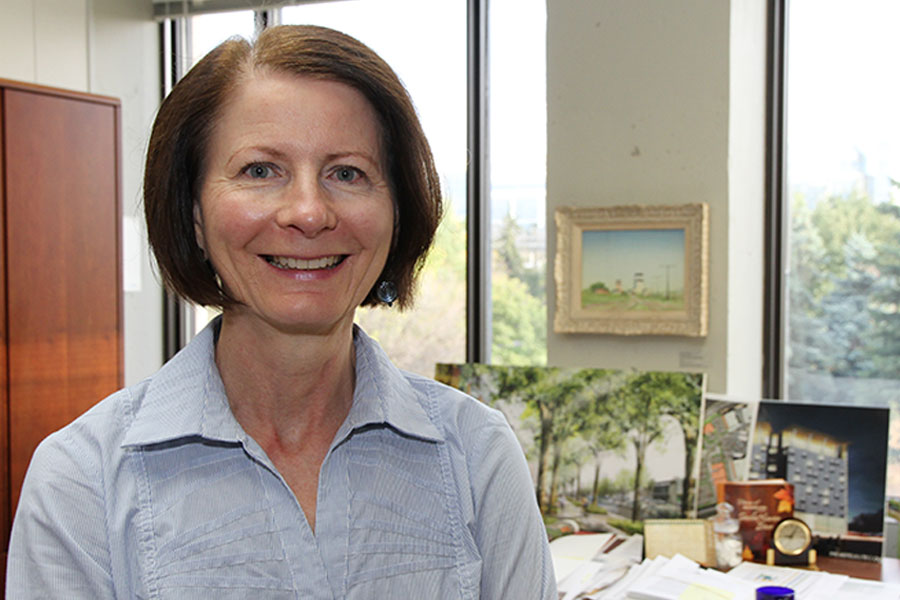Taking stock of the land
Judy Yungwirth could use a crystal ball; it would come in handy for her current project.
By Colleen MacPherson Yungwirth, director of Corporate Administration, is helping determine the university's future needs for land for both research and teaching. The U of S owns about 5,000 acres outside of Saskatoon that is currently being used by various units and colleges for research and teaching. In addition, it leases another 3,000 acres across the province, in the far North and as far away as Sable Island in Nova Scotia for research.
Yungwirth, director of Corporate Administration, is helping determine the university's future needs for land for both research and teaching. The U of S owns about 5,000 acres outside of Saskatoon that is currently being used by various units and colleges for research and teaching. In addition, it leases another 3,000 acres across the province, in the far North and as far away as Sable Island in Nova Scotia for research."What we're trying to find out is if we own what we need and if we need what we own," she said.
The need to look at future land use, which is being directed by a large steering committee with representatives from across the university and from civic and provincial governments, is driven by researchers themselves, said Yungwirth. Some say more land is needed for their work and the university may ultimately have to purchase more "but we want to approach this strategically. We also want to raise awareness about the resources that are already available to us. And to study our long-term needs, we have to start with a land use inventory."
An external consultant is doing that inventory of how university lands are currently used. An expert in land-use planning, the consultant will also meet with researchers and others to determine their long-term needs. The end product will be a report and map of university land use. The report, said Yungwirth, will detail researchers' ambitions and requirements for the future.
The project is described by Yungwirth as an extension of Vision 2057: University Land Use Planning, a document approved in 2009 to guide land development within the boundaries of the city. Similar principles will apply to land outside the city; "we value land to support teaching and research but also recognize its economic value."
The report and inventory will be invaluable for decision- making, she said, particularly "when people are calling us to sell us their land, and that happens a lot, or when people in colleges want to buy additional land. It will help us decide if we always need to buy land or if it would be better to lease" depending on the research project.
And by understanding future needs, Yungwirth said the university will be better able to find land that is just right for the research—in the right location, with the right characteristics like access, infrastructure and soil type, and at the right price. Finding a perfect fit can take years; "it's why we have to plan ahead."

